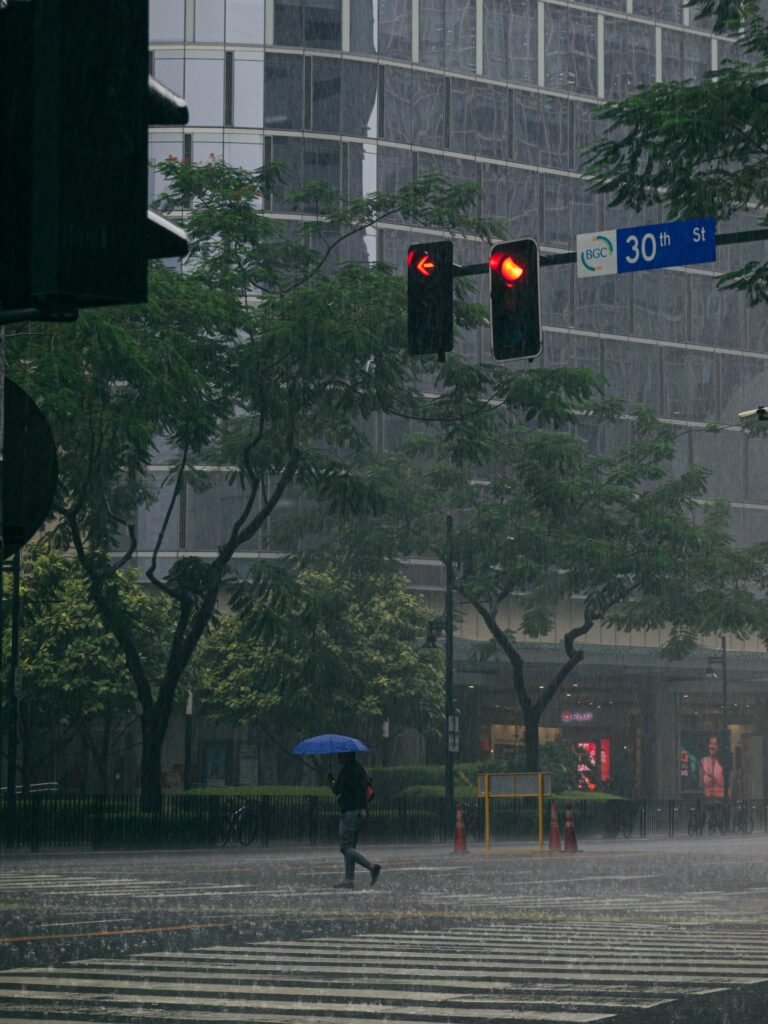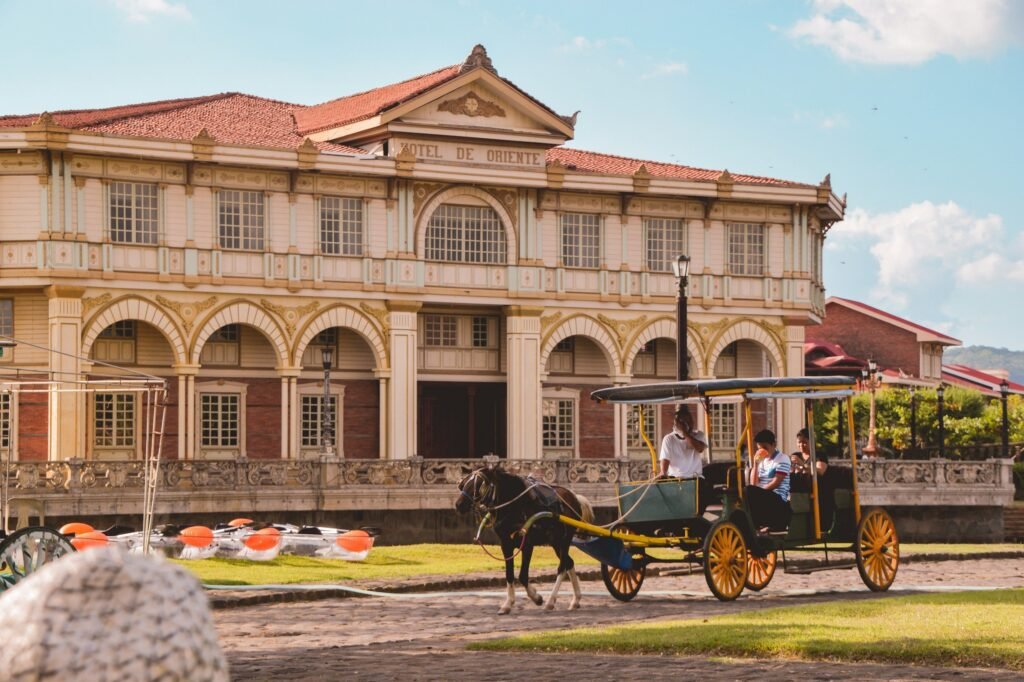Bantayan Island is a captivating destination that has become an excellent example of sustainable eco tourism in the Philippines, where pristine natural beauty and rich cultural heritage are preserved and celebrated with a commitment to responsible travel practices.

PHOTO: Hitoshi Namura on Unsplash
Is outdoor travel your cup of tea? Then perhaps Bantayan Island must be on your bucket list. The place is not only spectacular but it also promotes sustainable tourism. Nestled in the heart of the Philippines, Bantayan Island stands as an excellent example of sustainable tourism. This captivating island, with its pristine beaches, crystal-clear waters, and rich cultural heritage, has embraced a holistic approach to tourism.
Bantayan Island’s commitment to responsible travel practices, preservation of its delicate ecosystems, and promotion of authentic cultural experiences has earned it a reputation as a beacon of sustainability in the tourism industry. As visitors set foot on its shores, they embark on a journey that offers unforgettable moments of serenity and adventure.
Geographical and Cultural Background
Bantayan Island, situated in the Visayan Sea just off the northernmost coast of Cebu Island in the Philippines, is renowned for its pristine waters, powdery white sandy shores, and tranquil ambiance, creating an ideal haven for tourists seeking refuge from urban commotion.
The island has a rich cultural background deeply rooted in the Philippines’ history. Its heritage is a vibrant tapestry woven from various influences over the centuries. The island’s native population, known as the “Kantilang,” is believed to have settled here long before the Spanish colonial era.
Catholicism: Spanish Colonial Influence
When the Spanish arrived in the 16th century, they introduced Catholicism, leaving a lasting mark on the island’s religious and cultural practices.
The fusion of indigenous traditions with Spanish colonial influence gave birth to unique festivals and rituals. One such celebration is the renowned “Semana Santa,” a week-long event commemorating the Passion of Christ. During this time, the island comes alive with colorful processions, reenactments, and religious fervor, showcasing the deep faith of its people.
Culinary Delights
Bantayan Island’s cuisine reflects this cultural amalgamation, with a blend of indigenous flavors and Spanish-inspired dishes. Visitors can savor local delicacies like “kinilaw” (ceviche), “adobo sa asin” (salted adobo), and “budbod kabog” (millet rice cake).
Island Rhythms
Traditional music and dance also play a significant role in Bantayan’s culture. The islanders perform dances like the “Kuratsa” and “Tinikling,” which are characterized by graceful movements and vibrant costumes, reflecting the island’s joyous spirit.
Preserving a Heritage
Today, Bantayan Island continues to preserve and celebrate its unique cultural heritage. Its warm and welcoming residents invite travelers to immerse themselves in the island’s traditions, offering a glimpse into the Philippines’ rich and diverse cultural mosaic.
Sustainable Tourism Practices in Bantayan Island

PHOTO: Hitoshi Namura on Unsplash
One of the cornerstones of Bantayan’s sustainable tourism approach is its dedication to environmental conservation. The island has implemented strict regulations to protect its delicate ecosystems.
Environmental Stewardship
Efforts to reduce plastic waste and promote eco-friendly practices are evident throughout the island, with many businesses and resorts actively participating in beach clean-up initiatives and sustainable waste management.
In terms of accommodation, Bantayan Island has embraced sustainable design, with numerous eco-resorts and lodges designed to minimize their environmental footprint. These eco-friendly homes and establishments often utilize renewable energy sources, practice water conservation, and incorporate sustainable building materials.
Empowering Local Communities
Moreover, the island prioritizes the empowerment of its local communities. Sustainable tourism initiatives have provided employment opportunities for residents, allowing them to directly benefit from the tourism industry.
Bantayan Island’s sustainable tourism practices also extend to responsible tour operators who prioritize ethical and eco-conscious excursions, promoting activities that have a minimal impact on the environment and respect the island’s natural resources.
Collaboration with Stakeholders
The journey towards sustainable eco tourism in the Philippines, especially on Bantayan Island, has been one of collaboration and partnership, where stakeholders from various sectors have come together to preserve the island’s natural beauty and cultural heritage.
Local communities have been at the forefront of this sustainable tourism effort. They have actively participated in decision-making processes, sharing their traditional knowledge and insights on how to protect their environment.
Local Government Leadership
The local government has played a pivotal role in orchestrating and implementing sustainability measures. They have established regulations to manage the influx of tourists, limiting visitor numbers during peak seasons and enforcing responsible behavior through environmental guidelines.
Private sector and NGOs’ commitment
Private sector entities, including resorts, tour operators, and businesses, have also embraced sustainability. Many have invested in eco-friendly infrastructure, adopted green practices, and actively engaged in environmental and cultural preservation efforts.
Non-governmental organizations (NGOs) have played an essential role as well, providing expertise, resources, and support for various sustainability projects on the island. Furthermore, tourists themselves have become stakeholders in the sustainable tourism journey of Bantayan Island. They are encouraged to respect the local culture and environment, minimize waste, and participate in community activities.
Bantayan Island: A Must-See Destination
Blessed with a postcard-worthy coastline, Bantayan Island in Cebu is indeed a hidden gem worth exploring. As a nature lover and sustainability advocate, I have added this island oasis to my bucket list. After some research, I found that the island is committed to promoting eco-tourism and sustainability, making it an ideal getaway destination for individuals who desire to have a taste of nature without harming the environment.
Bantayan Island’s commitment to sustainability is truly awe-inspiring. While the pristine beaches and crystal-clear waters are undoubtedly alluring, what truly captures my imagination is the island’s dedication to preserving these natural wonders that truly captures my imagination. Knowing that strict environmental regulations are in place to protect delicate ecosystems is reassuring.
I’m particularly intrigued by the eco-friendly accommodations that have sprung up on the island. The thought of staying in resorts powered by renewable energy and equipped with rainwater harvesting systems excites my eco-conscious sensibilities. It’s a clear sign that Bantayan Island’s tourism industry is actively working to minimize its environmental footprint without compromising on comfort.
Towards Sustainable Living: BillionBricks Net-Zero Homes in the Philippines
In keeping with Bantayan Island’s commitment to sustainability, it’s refreshing to know that there are companies in the Philippines that share the same values. One such company is BillionBricks, whose net-zero homes are designed to minimize their environmental impact by reducing energy consumption and carbon emissions. These homes make use of solar power, making them an eco-friendly option for aspiring homeowners.
BillionBricks is building the first net-zero community and homes in the Philippines. Begin your net-zero journey with our affordable, energy-efficient, and income-generating homes.
For further information, get in touch with us at https://billionbricks.org/contact-us-ph.
Sources
-
Bantayan Island. (n.d.). About Bantayan Island. Retrieved from https://bantayanisland.info/information/about/
-
Sunstar. (January 2015). Bantayan Tourism Going Green. Retrieved from https://www.sunstar.com.ph/article/389179/bantayan-tourism-going-green
-
Kafferine Yamagishi, Ann Myril Tiu, Reciel Ann Tanaid Cullano, and Maria Esther . Medalla. (2020). Characterizing Tourism Destination and Policies Forward: The Case in Bantayan Island, Philippines. Retrieved from https://www.researchgate.net/publication/341936945_Characterizing_Tourism_Destination_and_Policies_Forward_The_Case_in_Bantayan_Island_Philippines
-
Department of Trade and Industry. (n.d.). Interventions on Bantayan Island October 2013 – February 2015. Retrieved from https://discovery.ucl.ac.uk/id/eprint/1471958/1/ProGED%20interventions%20on%20bantayan%20island.pdf



